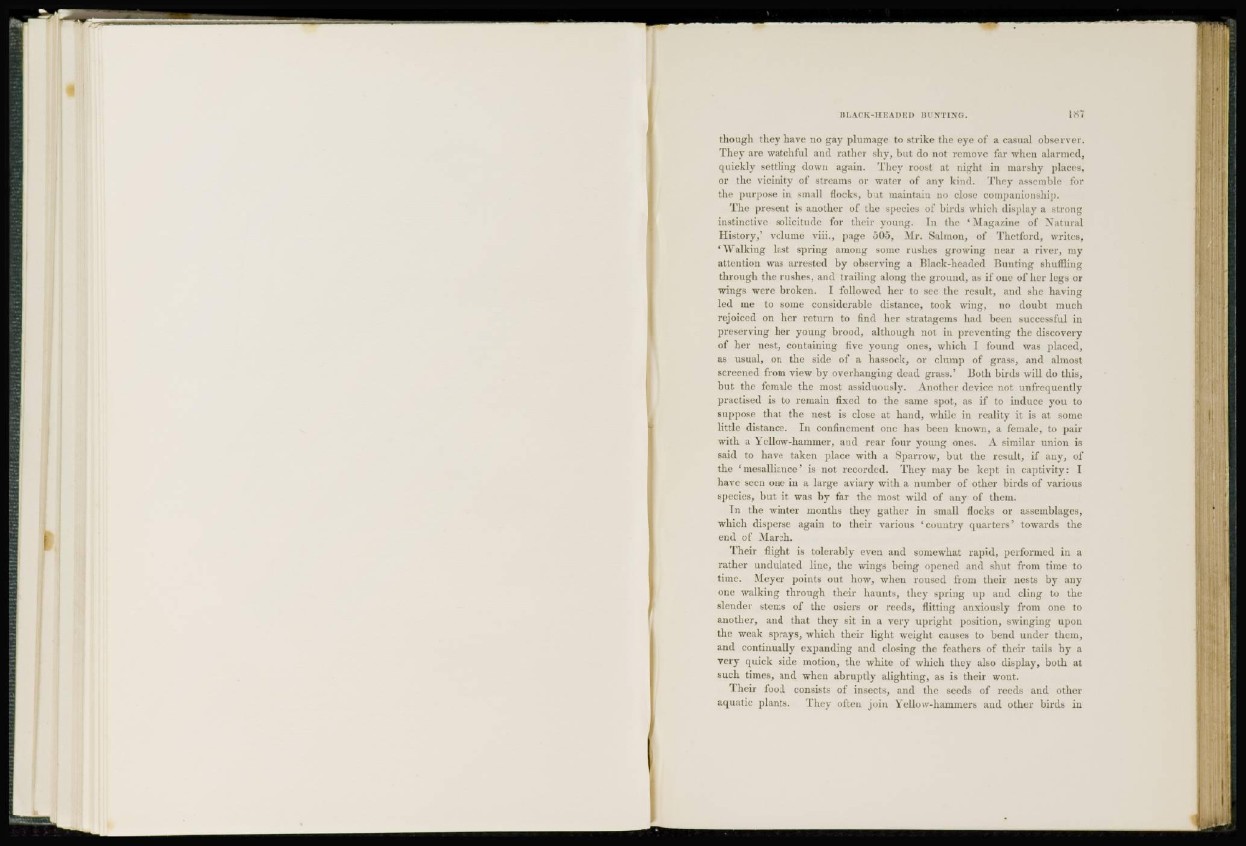
though they have no gay plumage to strike the eye of a casual observer.
They are watchful and rather shy, but do not remove far when alarmed,
quickly settling down again. They roost at night in marshy places,
or the viciuity of streams or water of any kind. They assemble for
the purpose in small flocks, but maintain no close compauiouship.
The present is another of the species of birds which display a strong
Instinctive solicitude for their young. In the 'Magazine of Natural
History,' volume viii., page 505, Mr. Salmon, of Thetlbrd, writes,
'Walking last spring among some rushes growing near a river, my
attention was arrested by observing a Black-headed Bunting shuffling
through the rushes, and trailing along the ground, as if one of her legs or
wings were broken. I followed her to sec the result, and she having
led me to some considerable distance, took wing, no doubt much
rejoiced on her return to find her stratagems had been successful in
preserving her young brood, although not in preventing the discovery
of her nest, containing five young ones, which I found was placed,
as usual, on the side of a hassock, or clump of grass, and almost
screened from view by overhanging dead grass.' Both birds will do this,
but the female the most assiduously. Another device not unfrequently
practised is to remain fixed to the same spot, as if to induce you to
suppose that the nest is close at hand, while in reality it is at some
little distance. In confinement one has been known, a female, to pair
with a yellow-hammer, and rear four young ones. A similar union is
said to have taken place with a Sparrow, but the result, if any, of
the 'mesalliance' is not recorded. They may be kept in captivity: I
have seen one in a large aviary with a number of other birds of various
species, but it was by far the most wild of any of them.
In the winter months the)' gather in small flocks or assemblages,
which disperse again to their various 'country quarters' towards the
end of March.
Their flight is tolerably even and somewhat rapid, performed in a
rather undulated line, the wings being opened and shut from time to
time. Meyer points out how, when roused from their nests by any
one walking through their haunts, they spring up and cling tu the
slender stems of the osiers or reeds, flitting anxiously from one to
another, and that they sit in a very upright position, swinging upon
the weak sprays, which their light weight causes to bend under them,
and continually expanding and closing the feathers of their tails by a
very quick side motion, the white of which they also display, both at
such times, and when abruptly alighting, as is their wont.
Their food consists of insects, and the seeds of reeds and other
aquatic plants. They often join Yellow-hammers and other birds in